The comprehensive treatment process of secondary aluminum dross and economic benefit analysis
The comprehensive treatment process of secondary aluminum dross and economic benefit analysis
Aluminum dross is an industrial byproduct generated during the electrolytic aluminum or melting process.
It can generally be divided into primary aluminum dross and secondary aluminum dross.
Usually, the dross generated during the primary aluminum melting, aluminum scraps smelting, melt transfer and purification and impurity removal process is classified as primary aluminum dross, which has the highest content of metallic aluminum, up to 15~75%.
The fine aluminum dross produced after the aluminum metal is separated and recovered by various methods is called secondary aluminum dross(SAD).
The metallic aluminum content in secondary aluminum dross is about 5-20%, and the aluminum oxide content is about 20-50%.
It also contains aluminum nitride, fluoride, chloride, etc., so it has dangerous characteristics such as reactivity and leaching toxicity.
In the newly revised “List of Hazardous Wastes (2021 Edition)”, it is clearly defined as hazardous waste.
In the context of the development of the new era, the requirements for economic development have gradually changed from high-speed development to high-quality sustainable development, which makes the resource processing of secondary aluminum dross of great practical significance.
However, the conditions of electrolytic aluminum enterprises vary.
How to choose the right technology to efficiently and economically process secondary aluminum dross is an urgent problem for all enterprises.
Combined with actual application cases and many years’ experience, Brightstar Aluminum machinery will bring you the most comprehensive treatment process of secondary aluminum dross and economic benefit analysis.
1. Hydrometallurgy process for secondary aluminium dross
1.1 Aluminum dross ammonia removal-nitrogen fixation- green recycling technology
Process Introduction
Aluminum dross is separated and screened by ball milling and sieving machine, and the aluminum dross enters the primary reactor.
The soluble ammonia in the aluminum dross is quickly converted into gaseous ammonia (ammonia gas) through the deaminizating agent and catalyst.
After filtration, it is recycled and filtered once, the filter mud produced is pressed into bricks (aluminum dross addition amount is 20%, supplemented by cement, yellow sand, etc.).
The ammonia gas produced by the previous two reactions is neutralized by sulfuric acid (concentration 95%) to form ammonium sulfate.
The filtrate produced in the process is collected and reused without external discharge.
The derivative products of each process are five categories: original aluminum dross, ammonium sulfate by-product, high-aluminum building material substitute, aluminum dross cement bricks, and coarse aluminum particles.
Economic Benefit Analysis
The production cost is about 175.00USD/ton, and the investment cost is about 145.00USD/ton;
The hydrolysis reaction process takes a long time, about 2 hours/reactor, and the temperature is about 80°C;
Reaction products:
The heavy metals of the aluminum dross reaction products, the purity of ammonium sulfate, the hydrogen content in ammonia and safety, and the saturated concentration of sewage circulation crystallization and other issues need to be further resolved.
1.2 “Multi-stage continuous enhanced hydrolysis leaching + high-value directional conversion” full quantitative technology
Process Introduction
The secondary aluminum dross is hydrolyzed and leached in a high-efficiency continuous multi-stage reactor by adding correctives and catalysts, and the process conditions such as reaction temperature and reaction time are precisely controlled to achieve catalytic enhanced decomposition of active components and rapid leaching of soluble salts, thereby achieving the purpose of efficient separation of active components and soluble salt components.
Among them, the ammonia released by the decomposition of secondary aluminum dross is prepared into a 20% concentration of ammonia water product through the ammonia absorption system;
The hydrogen, methane and other combustible gases released by the decomposition of active components are collected by the gas collection system and used as secondary fuel;
The soluble salts are purified and evaporated and crystallized to prepare aluminum refining agent products;
The inert slag after the secondary aluminum dross treatment is separated and dried to prepare high-aluminum material with an alumina content of >75%, which can be used as a substitute for high-quality bauxite to prepare refractory materials, calcium aluminate for water treatment agents, metallurgical refining agents and other products, realizing the value-added utilization of aluminum dross.
Economic benefit analysis
The multi-stage continuous catalytic enhanced hydrolysis leaching process is adopted to promote the deep dissociation of active components in aluminum dross and the leaching of salt components, making the treatment more thorough and efficient.
The high-aluminum material obtained after treatment has a high alumina content and a low impurity content, meeting the use requirements of high-grade bauxite.
It can be used as an intermediate product for the preparation of refractory materials, water purifiers, building materials and metallurgical additives, etc., realizing the full quantitative resource utilization of aluminum dross.
According to the current production line that processes 60,000 tons of secondary aluminum dross annually, the cost of processing secondary aluminum dross is 60.00-75.00USD per ton, the profit is about 70.00-200.00USD per ton, and the annual profit is about 4.3-8.6 million USD.
The process is simple, the system is safe and reliable, there is no secondary pollution, and the gas, liquid and solid components of the secondary aluminum dross treatment process are fully utilized in stages to achieve clean product value-added and zero waste emissions.
The process flow is long, the investment cost is high, the land area is large, and there are problems with product purity.
2. The pyrometallurgical process for secondary aluminium dross
Pyrometallurgical treatment of aluminum dross
Process Introduction
Aluminum dross and aluminum slag enter the sorting workshop, and after three-screen and two-mill sorting, the sorted aluminum enters the smelting workshop to be melted into aluminum ingots.
The sorting residue is mixed with limestone powder in a certain proportion, preheated and calcined in a rotary kiln to become a refining agent, which is then cooled, crushed and stored in the warehouse.
Economic Benefit Analysis
The process is mature, the equipment is simple, and the production cost is low. Low investment, small area cover, no secondary pollution, and diversified product solutions.
High energy consumption index requirements, which is unfavorable for areas with high energy consumption access requirements.
3. Pyrometallurgical and hydrometallurgy combined process
3.1 Pyrometallurgical process combined with hydrometallurgy process
Process Introduction
The pyrolysis coordinated harmless treatment technology (environmentally friendly dross processing) is used to separate aluminum from dross after it passes through the fully automatic aluminum dross processing system.
The metal aluminum is smelted and cast to produce finished aluminum ingots for sale;
The separated dross is treated by the alumina pretreatment system (proportioning, homogenization, roasting, 900℃, 10% calcium oxide) to generate alumina, and the subsequent water purifier production line produces finished polyaluminum chloride.
Economic Benefit Analysis
Low investment and mature technology.
Long process flow and high environmental protection requirements require consideration of access difficulties in regions.
3.2 Pyrometallurgy combined with hydrometallurgy for comprehensive resource utilization
Process Introduction
The pyrometallurgical method is used for efficient stabilization treatment to realize the clean conversion of active components in secondary aluminum dross into alumina.
The stabilized aluminum dross is quickly eluted to achieve efficient separation of salt components, and evaporation and crystallization are used to produce crystallized refined salt.
The dehydrated filter cake is dried to obtain a stabilized high-alumina material with an alumina content of >75%, achieving high-grade bauxite.
Economic Benefit Analysis
The treatment process is clean and efficient, with no flammable and other polluting emissions, and the process is simple and reliable.
The obtained high-aluminum material has an alumina content of >75%, soluble salt <0.5%, aluminum nitride <1%, leaching pH <9.0, and soluble fluoride <10mg/L, meeting the requirements of the “Hazardous Waste Identification Standard-Leaching Toxicity Identification” standard; the secondary aluminum dross refining salt recovery rate is >95%.
The calcium aluminate powder prepared from high alumina material meets the standard requirements of “Calcium Aluminate for Water Treatment Agent” (GB/T 29341-2012), the calcium aluminate refining agent products meet the standard requirements of “Pre-melted Calcium Aluminate for Steelmaking” (YB/T4265-2011), and the high alumina bricks and magnesia alumina spinel products meet the standard requirements of “High Alumina Bricks” (GBT 2988-2012) and “Magnesia Alumina Spinel” (GBT 26564-2011) respectively.
The process is long, the investment cost is high, the floor space is large and the production cost is high.
3.3 Hydrometallurgy combined with pyrometallurgy process aluminum dross treatment
Process Introduction
The secondary aluminum dross is hydrolyzed and leached in a high-efficiency continuous multi-stage reactor by adding correctives and catalysts, and the active components are catalytically enhanced decomposition and soluble salts are rapidly leached by precisely controlling the reaction temperature and reaction time, so as to achieve the purpose of efficient separation of active components and soluble salt components.
Among them, the ammonia released by the decomposition of the secondary aluminum dross (SAD) is prepared into a 20% concentration ammonia water product through the ammonia absorption system;
The hydrogen, methane and other combustible gases released by the decomposition of the active components are collected by the gas collection system and used as secondary fuel;
The soluble salts are purified and evaporated and crystallized to prepare aluminum refining agent products;
The inert slag after the secondary aluminum dross treatment is separated and dried to prepare high-aluminum materials, and the high-aluminum materials react with calcium carbonate at high temperature in the rotary kiln to produce calcium aluminate.
Economic Benefit Analysis
The treatment is more thorough and efficient, and the final product has a large market space.
The process is simple, the system is safe and reliable, and there is no secondary pollution
The process is long, and the investment and floor space are large.
The above-mentioned treatment processes can all meet the requirements of economic and resource-based treatment of secondary aluminum dross.
However, choosing a suitable treatment process based on the conditions of the dross-producing enterprises themselves and the conditions around the enterprises can maximize economic and social benefits and solve the problem of hazardous waste disposal of aluminum dross.
Actual production treatment process
Introduction to the production of calcium aluminate from secondary aluminum dross
Process Introduction:
The purchased aluminum dross and aluminum slag (hazardous waste) are transported to the factory in the form of ton bags, and the unloading is stored in the raw material warehouse.
The aluminum dross enter the sorting workshop, and after sorting through the ball mill and screening process, the aluminum particles enters the smelting workshop to be smelted into aluminum ingots.
The sorting residue is mixed with limestone powder in a certain proportion and preheated to enter the rotary kiln for calcination to become a refining agent. The refining agent is cooled and crushed and stored in the warehouse.
The aluminum dross and limestone powder enter the homogenization warehouse.
The main components of the mixed material are Al2O3, Al, CaCO3, etc.
The mixed material enters the rotary kiln and is calcined at high temperature to produce calcium aluminate CaO•Al2O3 (Ca(AlO2)2).
The resource utilization technology and equipment production process of secondary aluminum dross are as follows:
1. The ball milling and screening, the secondary aluminum dross(SAD) is fed into the ball mill, and the materials after ball milling are fed into the drum screen through the feeder to screen out the aluminum particles and aluminum dross. This process will need 1-3 times up to secondary aluminum dross type and situation.
2. Aluminum particles melting, the screened metal aluminum particles are fed into the rotary furnace for melting and cast into aluminum ingots;
3. Rotary kiln refining calcium aluminate, the secondary aluminum dross (SAD) and its ingredients are put into the rotary kiln for calcination, and calcium aluminate is sintered.
Calcium aluminate can be used in steel mills, water purification agent plants, highway roadbed filling, fire extinguishing agents, etc.
In the process of producing calcium aluminate powder, secondary aluminum dross can be used as one of the main raw materials.
First, the metal aluminum and other impurities in the secondary aluminum dross are separated by physical or chemical methods to obtain aluminum dross rich in alumina
Then, the aluminum dross is mixed with raw materials such as limestone and gypsum in a certain proportion, and after processes such as crushing, grinding, and screening, the preliminary product of calcium aluminate powder is obtained.
In the production process, it is necessary to strictly control the process parameters such as raw material ratio, grinding fineness, calcining temperature, etc. to ensure the quality and performance of calcium aluminate powder.
At the same time, in order to reduce energy consumption and reduce pollution, advanced energy-saving technologies and environmental protection equipment can be used, such as high-efficiency grinding equipment, low-energy consumption calciner furnace, waste gas treatment device, etc.
In order to increase the added value of calcium aluminate powder and expand its application areas, it can also be further processed and modified.
For example, by adding rare earth elements or performing surface modification, the activity and stability of calcium aluminate powder can be improved, making it have a wider application prospect in the fields of construction, ceramics, and chemical industry.
From an economic perspective, the recycling of secondary aluminum dross (SAD) to produce calcium aluminate powder not only reduces production costs, but also improves resource utilization efficiency.
By using secondary aluminum dross to replace part of the raw materials, production costs can be reduced;
On the other hand, as an important industrial raw material, calcium aluminate powder has a broad market demand and can bring considerable economic benefits to enterprises.
In terms of environmental protection, the recycling of secondary aluminum dross (SAD) to produce calcium aluminate powder also has significant advantages.
Through harmless treatment and resource utilization, waste emissions can be reduced and environmental pollution can be reduced.
At the same time, as a green building material raw material, the use of calcium aluminate powder also helps promote green buildings and sustainable development.
Reaction principle:
Al and oxygen undergo oxidation reaction at high temperature:
4Al(s)+3O2(g)→2Al2O3(s)
CaCO3 undergoes decomposition reaction at high temperature:
CaCO3(s)→CaO(s)+CO2(g)
CaO and Al2O3 undergo chemical reaction under high temperature calcination:
CaO(s)+Al2O3(s)→Ca(AlO2)2
AlN (aluminum nitride) transforms into Al2O3 under high temperature calcination, chemical reaction:
4AlN + 3O2 = Al2O3 + 2N2
Advantages of the process of producing calcium aluminate from secondary aluminum dross
⭐ Aluminum dross is used to produce refining agent, which is a waste material that turns waste into treasure, benefits the country and the people, and saves energy. There is no pollution and no residue.
⭐The use of refining agent in steel-making furnace plays the role of deoxidation, desulfurization, slag formation and improving the quality of steel. At present, this product has been exported to Europe, Japan, South Korea, India and other countries, and has been well received by foreign users.
⭐Using secondary aluminum dross (SAD) to produce refining agents reduces the use of bauxite, saves the country’s mineral resources, and solves the problem of aluminum dross pollution.
⭐Recycling some high-purity aluminum products will generate good economic and social environmental benefits.
⭐The whole process does not involve any chemical process, the process is safe and controllable, the aluminum dross calcining production device uses rotary kiln equipment, the production process is safe and environmentally friendly, and complies with relevant national industrial guidance policies.
⭐No secondary waste/ dross pollution is generated, and 100% of the secondary aluminum dross (SAD) is recycled.
Typical case analysis of investment in the production of Calcium Aluminate from secondary aluminum dross
Typical investment estimate for a 50,000.00 ton secondary aluminum dross treatment project:
Equipment investment: Equipment investment 50,000.00 tons secondary aluminum dross production line per year (the finished product is calcium aluminate): 5-6 million USD
Total civil engineering cost: 1-3 million USD;
Water, electricity and gas utilities: 0.5-1 million USD
Land area: 30000-40000 SQM
Total project investment: about 6.5-10 million USD.
Economic feasibility analysis of a typical case of producing calcium aluminate from secondary aluminum dross
Taking the project of processing 50,000 tons of secondary aluminum dross annually as an example, the estimated total investment is 6.5-10 million USD.
The overall planning and design treatment capacity of the project is 50,000 tons/year, the sales of calcium aluminate is 80.00-200.00USD/ton up to the different equipment settings, the production and operation costs are 90.00-110.00USD/ton, and the price of aluminum ingot is 2000.00-2500.00USD/ton.
After production, the normal annual operating income can reach 20.00-30.00 million USD, and the annual average profit can reach 5-7 million USD, and the project investment return rate is more than 40%.
Conclusion and outlook
Reusing secondary aluminum dross to produce calcium aluminate powder is an environmentally friendly and resource-based utilization method with broad prospects.
By scientifically and rationally utilizing secondary aluminum dross, we can not only achieve effective recycling of resources, but also promote green buildings and sustainable development.
With the continuous advancement of technology and the improvement of environmental awareness, we believe that this field will achieve more significant results in the future.

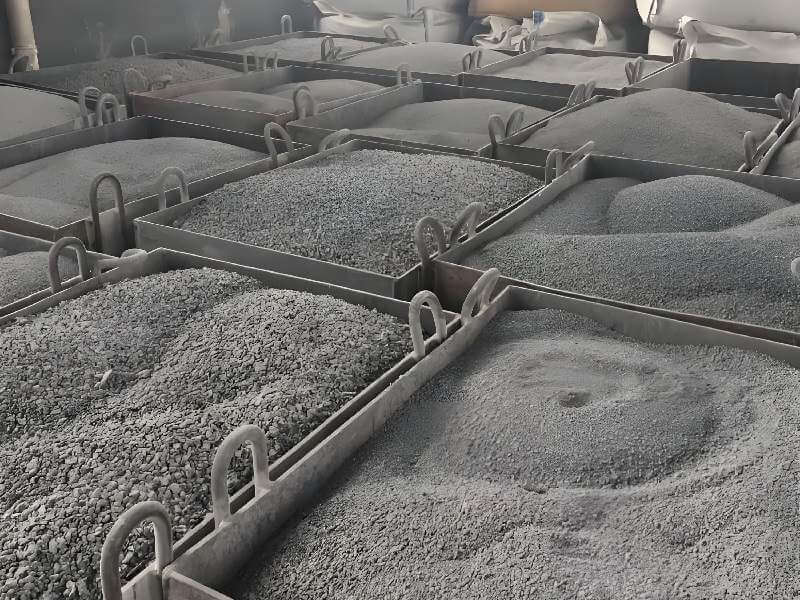

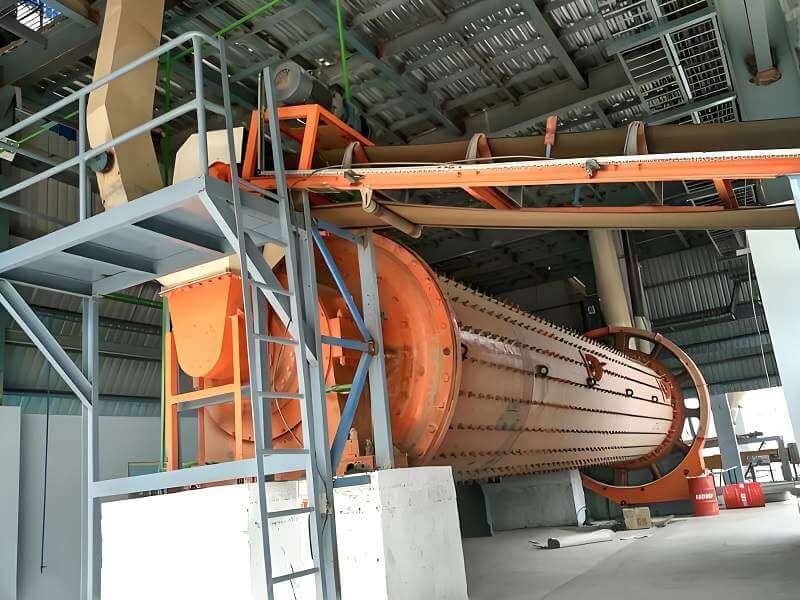
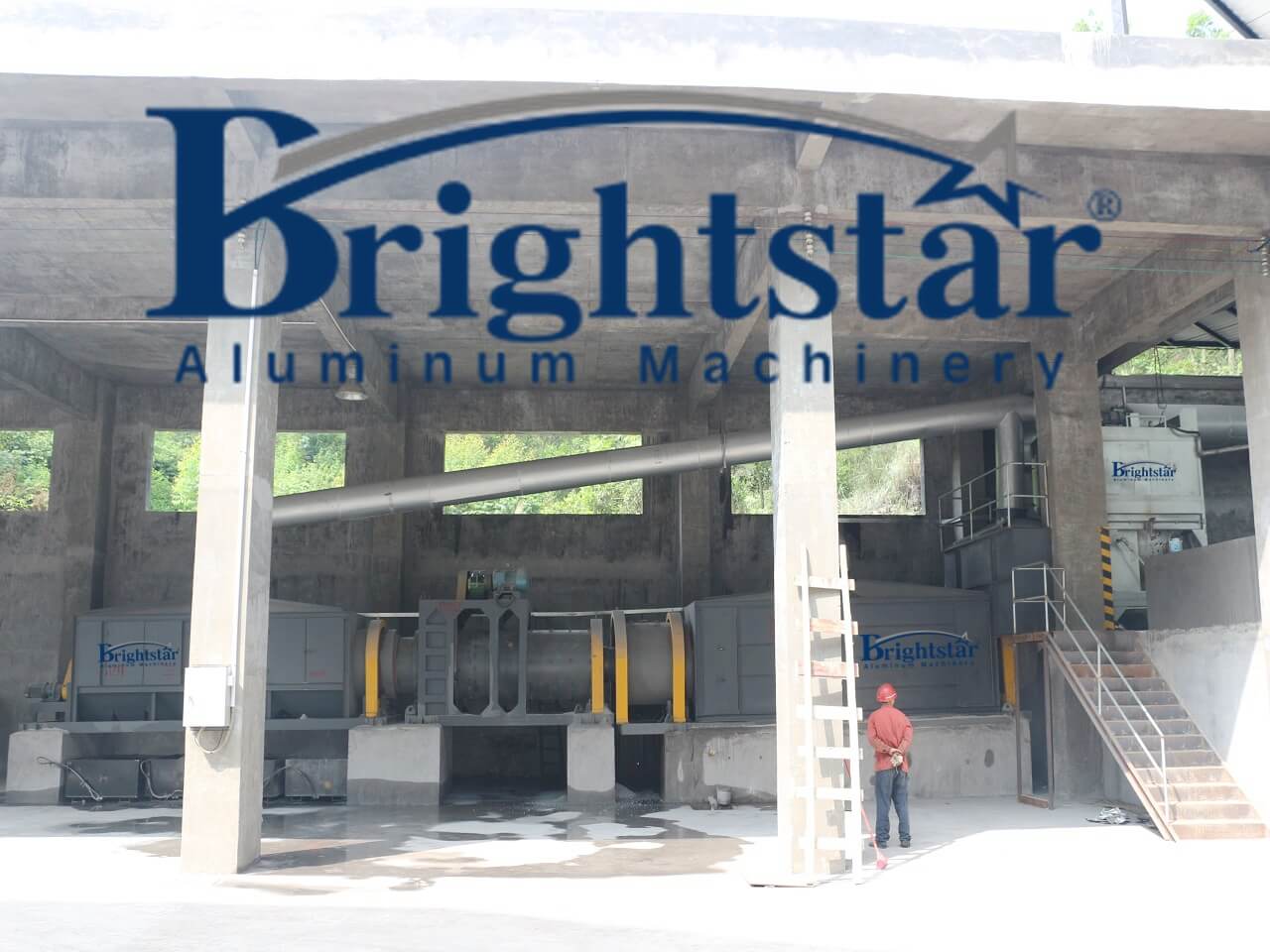
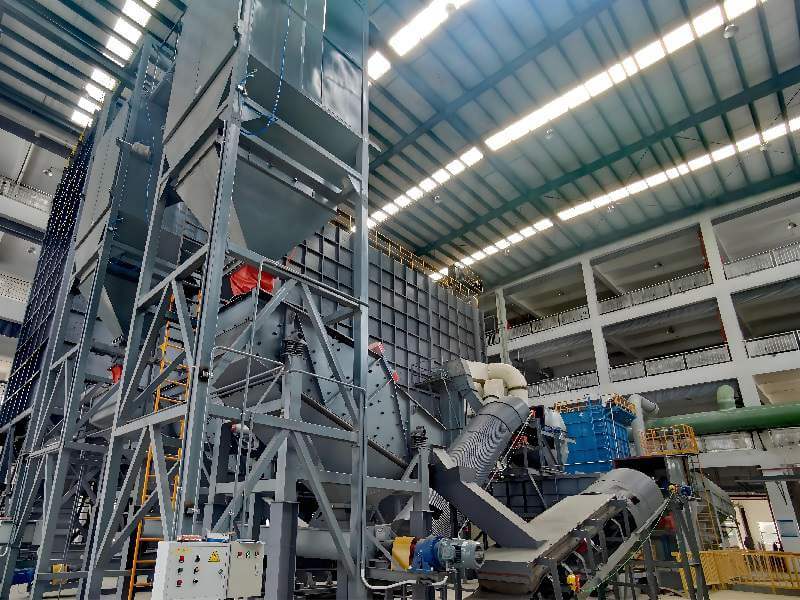
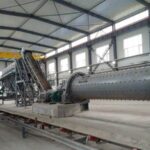
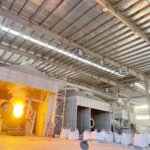
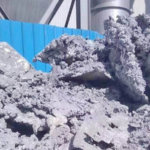
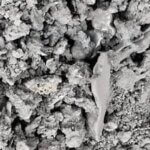
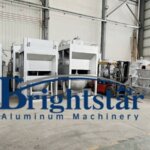
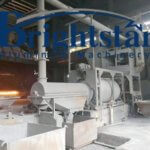



Dear Mr. NJ Lee
I am Le Trung Truc – Senior Project Manager of Viet Phat Technology and Investment Consulting Company (TECIN VP) – a Vietnamese company specializing in technology and investment consulting in the field of environment and renewable energy. In Vietnam, we have encountered the case of processing and recycling waste from the aluminum smelting industry from scrap, which is secondary aluminum dross, so I was very interested in reading this article and would like to ask you clearly about the production line of calcium aluminate from secondary aluminum dross with a scale of 300 tons/day.
I would appreciate it if you could send me via my email a proposal as detailed as possible for such a production line. Thank you very much.
Best regards
Le Trung Truc
As representatives of Gloria Aluminium, we appreciate the detailed analysis of secondary aluminium dross treatment and its economic benefits. Efficient dross management is integral to our sustainability efforts and cost-effectiveness. This study reaffirms our commitment to innovative solutions that enhance resource recovery and environmental responsibility. Thank you for highlighting these critical aspects.
Dear Sir
Thank you for your kind comment
Hope it can be of any help
Best regards
Brightstar Aluminum Machinery